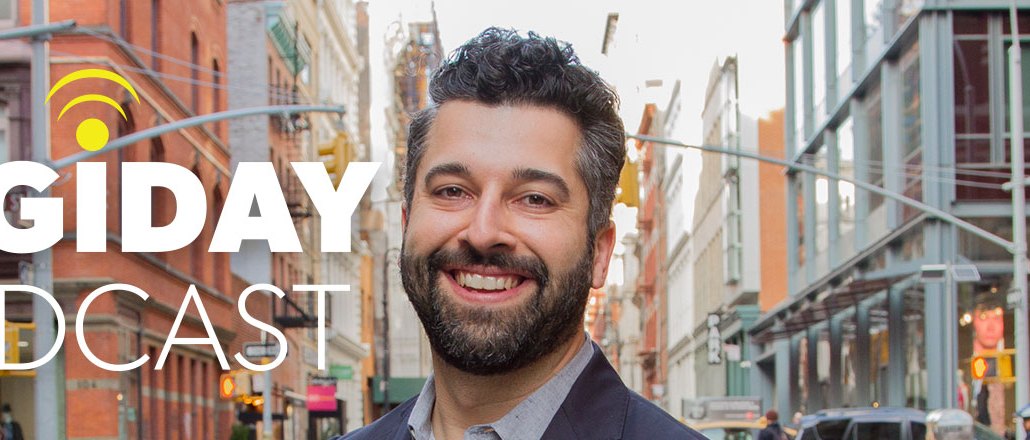Save 50% on a 3-month Digiday+ membership. Ends Dec 5.
Slate’s Keith Hernandez: Being all-in on platforms isn’t feasible for most publishers

Subscribe: iTunes | RSS |
The hot topic of conversation for most publishers these days is around platforms. Publishers are rushing to put content on Facebook, Google and elsewhere. They’re building out Snapchat content teams.
But all that flurry of activity comes at a price. For a midsize publisher like Slate, with 115 employees, that means making choices on where to place bets rather than trying to be everywhere at once.
“We’d love to be all-in, but being all-in comes with costs,” Slate president Keith Hernandez said in this week’s Digiday Podcast. “Facebook Instant Articles and Google AMP are engineering costs. When you look at something like Snapchat, there’s high friction costs to build a team of eight to 12 people who are going to have to work on creating original content for Snapchat.”
Below are highlights, edited for clarity, from the episode.
For Slate, podcasts are more interesting than Snapchat.
While many publishers are building out Snapchat content teams, Slate is standing on the sidelines. Instead, it’s poured resources into podcasting, where it was an early participants. Slate now has a podcasting arm, Panoply, which works with other publishers to produce and make money off podcasts.
Ad position: web_incontent_pos1
“You have to be really deliberate,” Hernandez said. “You have to figure out what your team is good at right now. The most fun thing would be to say you’re not good at Snapchat now, so let’s go hire people who are good at Snapchat. The reality is we have fiscal responsibility to make our revenue goals. We have to make deliberate choices of what we’re good at.”
The way to combat scale is a point of view.
From the start of the Web, advertisers have hunted for scale. That used to be found at portals like MSN, AOL and Yahoo, Hernandez said, and that’s a role now fed by the new “digital skyscrapers” like Vice, Vox and BuzzFeed. The key for competing is to offer a unique point of view that appeals to a particular audience, Hernandez said.
“The reality is, more brands are looking for partners who can dive deeper into what their brand attributes are and what they can accomplish, and that’s not always going to be Vice, Vox or BuzzFeed,” he said. “Those places might work well for a general audience play, but when you talk to brands like Chase, American Express and Jaguar and Mercedes, they’re going to need a particular point of view that’s different than a mass scale play.”
Slate wants to be “the smartest, the most interesting” in the room.
At BuzzFeed, where Hernandez worked as vp of brand strategy before joining Slate four months ago, the pitch to advertisers wasn’t the typical publisher adjacency play. Instead, BuzzFeed’s approach is more like an agency: It leads with the notion that BuzzFeed is dialed into the digital Zeitgeist and can help brands to do the same. The twist at Slate is narrowing that pitch, Hernandez said.
“We should be the smartest and most interesting person in the room,” he said. “We should know about the brand up and down because we’re not the biggest company out there. We need to understand what they’re looking for, the marketing strategies they’re up to, and find a place where Slate can help out, whether that’s with original custom content, editorial sponsorships or simply, ‘Put your cool stuff next to our cool stuff.’”
Ad position: web_incontent_pos2
Native advertising is now table stakes.
There was a time when publisher content studios were new and exciting. That’s now passed, as nearly every publisher has some form of native ad offering. That’s upped the pressure to develop unique programs, Hernandez said.
“Custom content is now table stakes,” he said. “If you go into a brand and say you have custom content, they want to know if you have an operations team as well, do you have banner ads. It’s the not differentiator it was years ago. We’re not trying to be all things to everybody on the custom side. We’re trying to pick the brands that make the most sense.”
Publishers were all about unique visitors until they stopped growing fast.
Digital publishers used to brag about their unprecedented fast audience growth, particularly that reported by comScore. But as platforms rose, and the law of big numbers kicked in, these same publishers have pivoted to say that unique visitor and pageview growth isn’t that important. While they have a point, Hernandez said it is a bit convenient.
“The unique visitor number is not the right number for everybody to be caring about. As a publishing industry, we did this to ourselves. We said, ‘Look at this number, look at me grow it, check out the hockey-stick growth. You better spend more money with us.’ When that stopped, and it became flat, we had to say, ‘Don’t look at that number.’”
More in Media

What publishers are wishing for this holiday season: End AI scraping and determine AI-powered audience value
Publishers want a fair, structured, regulated AI environment and they also want to define what the next decade of audience metrics looks like.

Digiday+ Research Subscription Index 2025: Subscription strategies from Bloomberg, The New York Times, Vox and others
Digiday’s third annual Subscription Index examines and measures publishers’ subscription strategies to identify common approaches and key tactics among Bloomberg, The New York Times, Vox and others.

From lawsuits to lobbying: How publishers are fighting AI
We may be closing out 2025, but publishers aren’t retreating from the battle of AI search — some are escalating it, and they expect the fight to stretch deep into 2026.
Ad position: web_bfu
